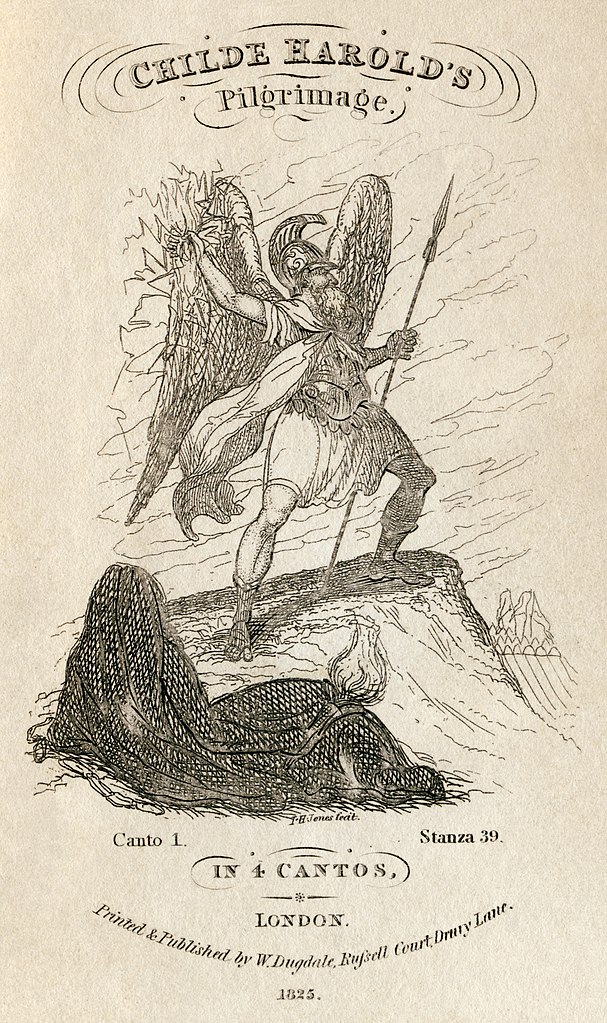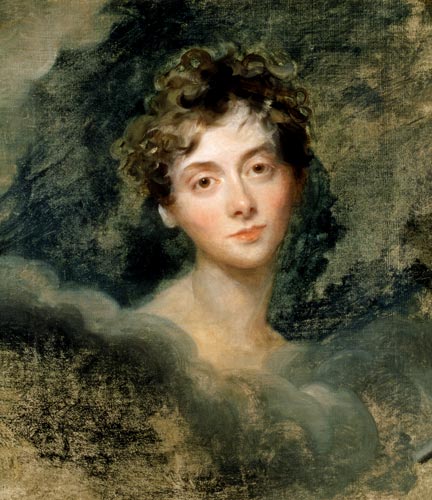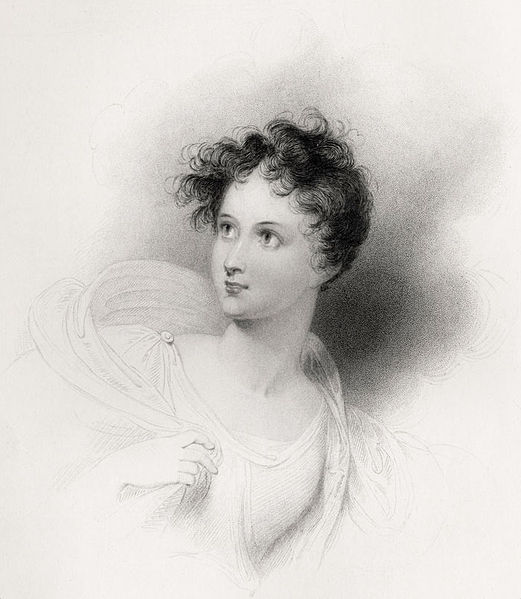
Childe Harold's Pilgrimage is a long narrative poem written/published circa 1812-1818 by George Gordon Byron, 6th Baron Byron, commonly known as Lord Byron. His best known works include Don Juan as well as, of course, the topic of our interests here: Childe Harold's Pilgrimage (referred as Pilgrimage from this point on). Beneath is is part of Byron's manuscript of the poem.

Pilgrimage was written in four cantos with Spenserian Stanza which means that the structure of the poem usually consists of eight Iambic Pentameter lines (consist 5 pairs of short/long or under-stressed stressed syllables, e.g. traPEZE is word with an Iambic pair of syllables) followed by an Alexandrine (a 12 syllable line). The rhythm pattern is ABABBCBCC.
Pilgrimage describes the journey of Childe Harold. Childe is a medieval term for a young man who's elegible for knighthood. He represents the young generation in a post-revolutionary and Napoleonic society who were sick and tired of the war, weren't sure what they would want to do with their lives, which can be quite relevant in today's world.
Childe Harold, for example, is a young man of some degrees of nobility. We will be introduced to him as someone who had led a life of pleasure for some time, yet got disillusioned by the surface of extravaganza. He sought distraction by going on a journey to foreign countries, searching for his identity.
In other words, Harold is a young guy at the starting point of his mature life, at a loss of his world view and in lack of his self identity, and tries to gain some experience through his pilgrimage into the bewilderedness.
In this lengthy poem, Lord Byron shows us a tapestry of exotic beauty and literary gems of such richness and sometimes obscurity. I'd like to use this blog as a commonplace book for the knowledge we can soak up reading this poem, or even more, some background or loosely related information that... well, as Ada Lovelace was intrigued by his father's past, so are we.

Let's take a look at the author first.
George Gordon Noel Byron, 6th Baron Byron
Born: 22-Jan-1788 London, England Died: 19-Apr-1824.
It would probably make more sense to think of Pilgrimage as an autobiographical piece: the origin as well as first example of a Byronic Hero (I'll be expanding on this topic in a future post). He was titled a national hero of Greece as he travelled to fight the Ottoman Empire in the Greek War of Independence, before he died in Missolonghi of a fever he contracted at the age of 36.
Born: 22-Jan-1788 London, England Died: 19-Apr-1824.
It would probably make more sense to think of Pilgrimage as an autobiographical piece: the origin as well as first example of a Byronic Hero (I'll be expanding on this topic in a future post). He was titled a national hero of Greece as he travelled to fight the Ottoman Empire in the Greek War of Independence, before he died in Missolonghi of a fever he contracted at the age of 36.
Byron's best known affair is probably with Lady Caroline Lamb who at that time much shocked the society when it started circa 1812. Lamb (13 Nov. 1785 - 26 Jan. 1828) , who was then already married to William Melbourne, described him as "mad, bad and dangerous to know" when they first met, which eventually became Byron's epitaph. This particular portrait was painted by Sir. Thomas Lawrence.

Next time, I'll introduce the dedication page of Pilgrimage, which was bestowed to Ianthe, Byron's nickname for Lady Charlotte Harley (Charlotte Bacon, nee Harley), Lady Oxford (Jane Elizabeth Scott, nee Harley)'s daughter. And from there, let the journey to the unknown begin.


1 comment:
Some really stunning images here to accompany your analysis, commentary, and design.
Post a Comment